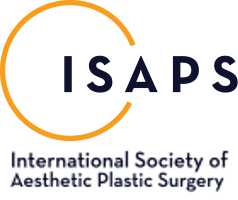Traditional Facelift at Fulcrum Aesthetics
The traditional facelift, also known as a rhytidectomy, remains a powerful and time-tested option for patients seeking comprehensive facial rejuvenation. This procedure is designed to address moderate to severe signs of aging, including:
- Deep wrinkles
- Jowls
- Sagging skin in the lower face and neck
A traditional facelift in Chicago tightens the underlying muscles and removes excess skin to create smoother contours and a more youthful appearance. While it doesn’t involve the deeper tissue repositioning used in a deep plane facelift, it still delivers striking, natural-looking results, especially for those focused on lifting the jawline, cheeks, and neck.
The procedure is fully customizable to your specific concerns and anatomy, whether you’re seeking subtle refinement or a more dramatic transformation. Incisions are discreetly placed along the hairline and natural creases to minimize visible scarring. Results can last many years with proper care, making it an enduring investment in your confidence and beauty.
Deep Plane vs. Traditional Facelift: Which One is Right for You?
Choosing between a deep plane facelift and a traditional facelift really depends on your goals, facial anatomy, and how advanced your signs of aging are. A deep plane facelift goes deeper than the traditional approach, lifting not just the skin but also the SMAS layer and facial ligaments. This allows for more natural-looking results, especially in the midface and around the nasolabial folds — areas that are tough to treat with a skin-only lift. Traditional facelifts, on the other hand, focus on tightening the skin and superficial muscle layers, which can provide a smoother contour in the lower face and neck.
In terms of longevity, deep plane facelifts tend to last over 10 years with proper care, while traditional facelifts typically offer results for 7 to 10 years. The deep plane technique is best suited for those with advanced signs of aging, deep wrinkles, and noticeable volume loss. Traditional facelifts are ideal for moderate to advanced aging, particularly sagging in the cheeks, jowls, and neck. Both methods use discreet incisions placed in natural lines or creases, and most patients can expect about 2 to 4 weeks of initial recovery. Deep plane patients typically see full results in 2 to 3 months, while swelling from a traditional facelift might linger a bit longer.


















